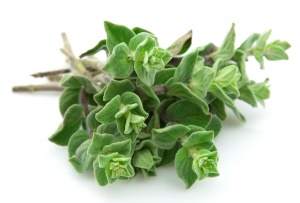Origanum vulgare
| See Also | Botanical Monographs |
|---|
Oregano (Origanum vulgare) has been used historically both as a culinary herb and as a therapeutic herb. The Greeks used it extensively, both internally and topically as a remedy for narcotic poisons, culvulsions and dropsy. Oregano tea is a strong sedative and was traditionally used to treat colds, fevers and painful periods. To explore the characteristics, medicinal uses and prescribing considerations of this herb in more detail, check out the references indicated.[1], [2]
Contents
Characteristics
- Common Names: Oregano
- Family: Lamiaceae
- Habitat:
- Parts Used: Leaves
- Constituents: Oils contain phenols (carvacrol, thymol), phenolic acids
- Medicinal Actions: antifungal, antibacterial, antioxidant, antispasmodic [3], antimicrobial
Uses
Historical Uses:
Oregano has been used historically both as a culinary herb and as a therapeutic herb. The Greeks used it extensively, both internally and topically as a remedy for narcotic poisons, culvulsions and dropsy. Oregano tea is a strong sedative and was traditionally used to treat colds, fevers and painful periods.
Medicinal Uses:
- gastrointestinal candidiasis and to modify bowel flora
- peptic ulcers and for the treatment of the bacterial infection Helicobacter (h.pylori)
- Oregano is effective against bacterial and fungal infections.
- chronic bronchitis, bronchiectasis and bronchial asthma
- fevers, colds
- abrasions and cuts
- used as an oil in facial and skin care products
- Other Conditions
- painful periods
- insomnia, weight loss, headaches, migraines
- rheumatoid arthritis
Prescribing Considerations
Oregano is used commonnly in food preparation as a spice.
The information provided is intended to augment the treatment from a naturopathic doctor or other trained medical professional. Although most herbs are generally safe, it is recommended that you avoid self-prescribing especially when there is an underlying ongoing medical condition, if you are on any prescription medications or if you are pregnant or breastfeeding.
Formulations and Preparation
If beings used to address bowel flora than an enteric-coated preparation is best.
- Oils:
- Food: used as a spice in many dishes, especially Italian food.
Safety
The safety and prescribing considerations for this herb include:[4], [5]
- Generally regarded as safe.
- Side-effects are rare. Avoid if there is any known allergy.
- Drug-Herb Interactions. None known.
References
- ↑ Boon Heather, Smith Michael (2009) 55 Most Common Medicinal Herbs: The Complete Natural Medicine Guide Second Edition Institute of Naturopathic Education and Research, CCNM Toronto.
- ↑ Godfrey Anthony, Saunders Paul, Barlow Kerry, Gowan Matt (2011) Principles and Practices of Naturopathic Botanical Medicine, Advanced Botanical Medicine. V3 CCNM Press, Toronto.
- ↑ Bone Kerry 2007 The Ultimate Herbal Compendium, a Desktop Guide for Herbal Perscribers. Phytotherapy Press, Australia.
- ↑ Stargrove Mitchell Bebell, Treasure Jonathan, McKee Dwight L (2008) Herb, Nutrient and Drug Interactions: Clinical Implications and Therapeutic Strategies.
- ↑ Brinker Francis (1997) Herbal Contraindications and Drug Interactions: Plus Herbal Adjuncts With Medicines, 4th Edition Eclectic Medical Publications.
